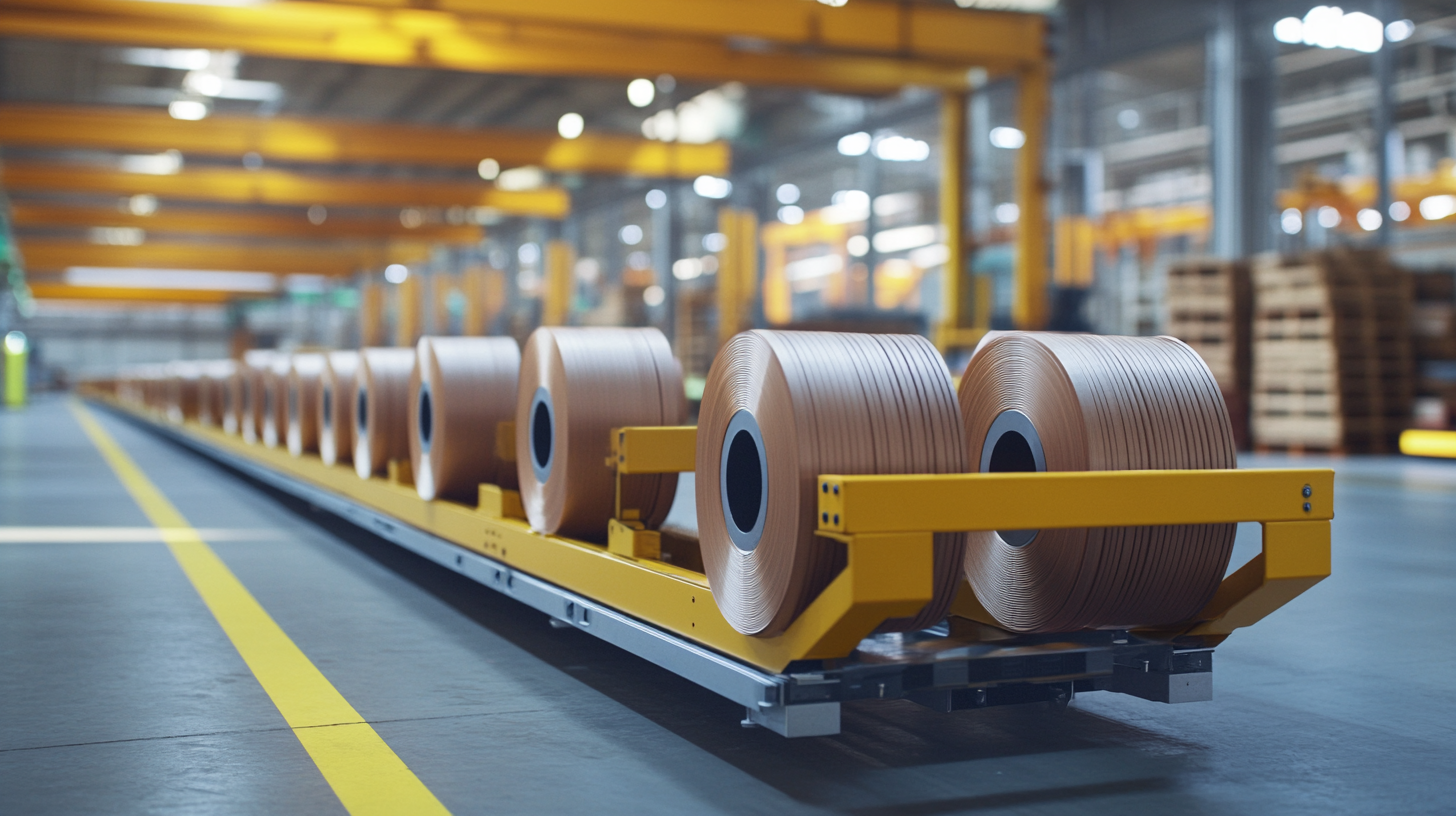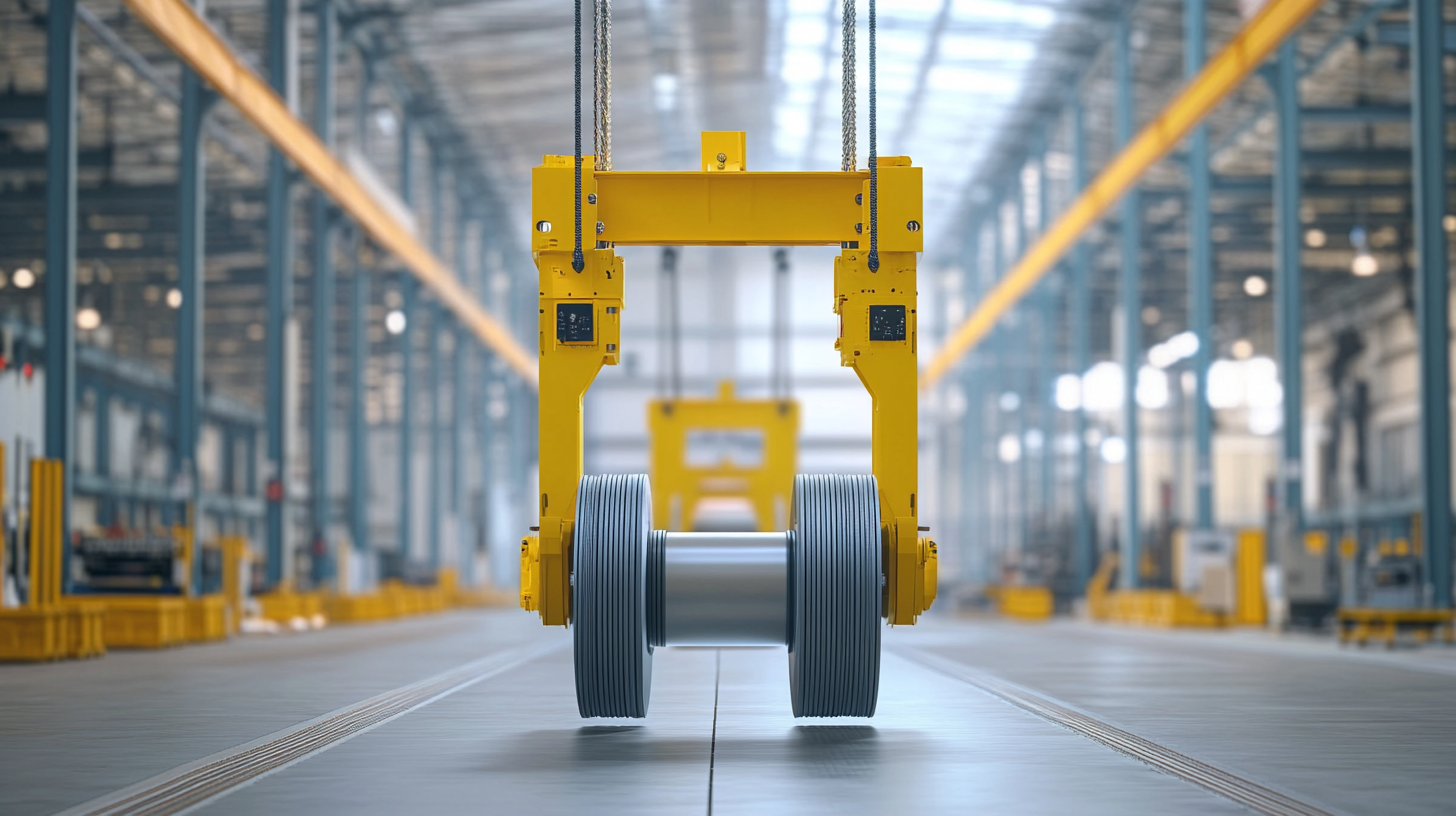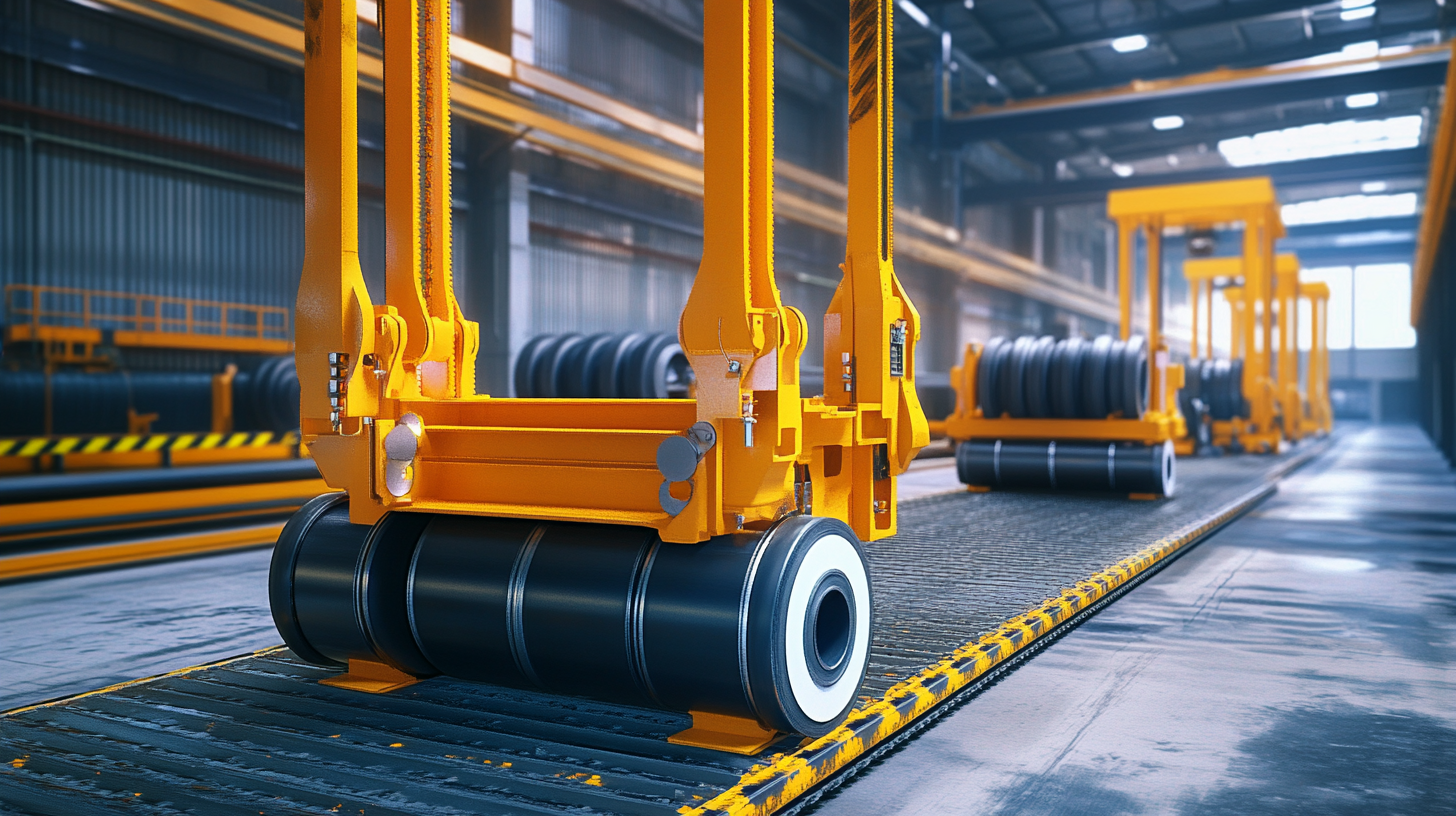Innovative Roll Lifting Equipment Examples to Enhance Global Supply Chain Efficiency
In today's fast-paced global economy, supply chain efficiency is more crucial than ever for businesses seeking to maintain a competitive edge. As organizations strive to optimize their operations, innovative technologies play a pivotal role in reshaping traditional practices. One such advancement is the development of roll lifting equipment, designed to streamline the handling and transportation of various materials. By integrating these specialized tools into their logistics strategies, companies can significantly enhance the speed and safety of their operations, reducing labor costs and minimizing the risk of workplace injuries.
This blog explores several noteworthy examples of roll lifting equipment that are revolutionizing supply chain processes worldwide. From automated solutions to manual tools, these innovations are not only improving efficiency but also contributing to more sustainable practices within the industry. By examining the capabilities and applications of various roll lifting equipment, we aim to highlight how businesses can leverage these technologies to optimize their supply chains and meet the ever-evolving demands of the global market.

Emerging Technologies in Roll Lifting Equipment Revolutionizing Supply Chain Operations
Emerging technologies in roll lifting equipment are significantly revolutionizing supply chain operations, leading to heightened efficiency and productivity. According to a report by Research and Markets, the global market for advanced lifting equipment is projected to reach $15 billion by 2025, reflecting a compound annual growth rate (CAGR) of 7.2%. This growth is driven by the increasing demand for automation and the need to enhance safety measures in material handling operations.
One of the most notable advancements is the integration of IoT (Internet of Things) technologies into roll lifting equipment. By utilizing smart sensors, companies can monitor the load conditions in real time, reducing the risk of accidents and failures. A case study published by Logistics Management highlighted that companies employing IoT-enabled lifting solutions saw a 30% reduction in operational downtime, thereby streamlining supply chain processes and lowering costs.
Additionally, automation in roll lifting equipment, such as robotic arms and automated guided vehicles (AGVs), is gaining traction. According to a report from the Robotics Industry Association, the demand for industrial robots is expected to grow by 20% annually through 2024. This shift not only minimizes manual labor but also enhances precision in lifting and handling, which is crucial for maintaining product integrity during transit.
Furthermore, the advent of augmented reality (AR) in training and operational processes is enhancing skill development and efficiency. A survey from the AR Association indicates that 70% of organizations adopting AR for training report improved productivity levels. These innovative solutions illustrate how emerging technologies in roll lifting equipment are paving the way for a more efficient and resilient global supply chain.
Innovative Roll Lifting Equipment Impact on Supply Chain Efficiency
This chart illustrates the various impacts of innovative roll lifting equipment on global supply chain efficiency, highlighting key benefits such as increased efficiency and improved safety. Each measure represents a significant advantage that these technologies bring to supply chain operations.
Impact of Automated Roll Handling Systems on Operational Efficiency Metrics
The integration of automated roll handling systems is revolutionizing operational efficiency metrics within global supply chains. By minimizing manual labor and streamlining processes, businesses can significantly enhance their logistics workflows. The impact of these innovations can be seen in industries ranging from manufacturing to shipping, where time and labor costs directly influence profitability.
Automated systems, such as Automatic Guided Vehicles (AGVs), are being employed to manage roll-on/roll-off (RORO) terminal operations. This automation not only boosts productivity but also reduces operational costs, allowing companies to allocate resources more effectively. The results are compelling, with organizations experiencing shorter turnaround times and improved handling safety, which translates into better service delivery.
Moreover, the increased reliance on technology for operational efficiency aligns with broader trends in business readiness for artificial intelligence (AI) adoption. As employees become empowered to harness these advanced technologies, companies can unlock new potentials for growth and innovation. This alignment between operational efficiency and technology readiness is crucial for today’s supply chain, which faces continuous pressure to improve service while managing costs effectively.
In summary, leveraging automated roll handling systems presents a promising pathway for enhancing global supply chain efficiency, setting a new standard for operational performance across industries.

Case Studies: Successful Integration of Roll Lifting Solutions in Major Industries
The integration of innovative roll lifting equipment in major industries showcases a transformative approach to enhancing supply chain efficiency. A case study from the manufacturing sector highlights a leading automotive company that implemented advanced roll lifting systems to streamline their assembly line operations. According to a report by the Material Handling Industry of America, companies utilizing modern lifting technology can realize productivity gains of up to 40%. This shift not only reduces the manual labor required but also minimizes the risk of workplace injuries, thus fostering a safer environment.
In the logistics sector, a major packaging firm adopted roll lifting solutions to optimize the handling of heavy rolls of material. By leveraging automated roll lifting systems, the company achieved a 30% decrease in cycle times for loading processes. The International Journal of Production Economics notes that reducing cycle times directly correlates with improved throughput and customer satisfaction rates. The success of this equipment integration demonstrates how redefining material handling processes can lead to significant operational benefits.
Furthermore, the food and beverage industry has seen similar advancements. A notable beverage manufacturer utilized roll lifting technology to manage the heavy cylinders containing carbonated beverages. A study from the Food Processing Technology Association indicates that implementing such solutions can enhance operational efficiency by up to 15%. As these case studies illustrate, the successful adoption of roll lifting equipment is paving the way for industries to tackle their supply chain challenges more effectively.

Comparative Analysis of Traditional vs. Innovative Roll Lifting Mechanisms
When examining the efficiency of supply chains, the role of lifting mechanisms, particularly roll lifting equipment, becomes increasingly significant. Traditional lifting methods have long relied on manual labor and basic hydraulic systems, which often lead to bottlenecks and inefficiencies. Such methods typically struggle with heavy loads and can pose safety risks to workers, impacting overall productivity. These limitations highlight the urgent need for innovative solutions in today's fast-paced logistics environment.
In contrast, modern roll lifting technologies have revolutionized how goods are handled within the supply chain. Innovations such as automated roll lifters and robotic systems enhance both speed and safety, allowing for seamless transitions of heavy cargo. These advanced mechanisms are designed to optimize load distribution and minimize the physical strain on operators, significantly reducing the potential for workplace injuries. Additionally, their precision capabilities play a crucial role in improving inventory management, as they streamline loading and unloading processes.
While traditional mechanisms might still find relevance in specific contexts, the comparative advantages of innovative roll lifting equipment are becoming apparent. By embracing these advancements, businesses not only bolster their operational efficiency but also position themselves to meet the demands of a global market that increasingly prioritizes speed and safety in logistics solutions. The transition from outdated methods to innovative systems presents an opportunity for organizations to enhance their overall supply chain performance.
Future Trends in Roll Lifting Equipment and Their Potential Supply Chain Implications
In the ever-evolving landscape of global trade, roll lifting equipment is becoming increasingly important as companies seek to enhance supply chain efficiency. The modern supply chain hinges on the ability to move heavy and unwieldy goods seamlessly, and innovative roll lifting solutions are at the forefront of this transformation. As organizations adapt to fluctuations in global trade dynamics—exemplified by ongoing tariff negotiations—efficient handling of logistics operations is crucial.
Future trends in roll lifting equipment point towards greater automation and smart technology integration. These advancements promise to streamline operations, reduce labor costs, and minimize errors in the supply chain. For instance, the introduction of AI-powered systems can optimize load distribution and enhance safety protocols, enabling companies to respond more agilely to changes in demand and trade policies.
As the roll lifting equipment market experiences robust growth, driven by innovations and the need for advanced solutions, businesses must be proactive in adopting these trends. The implications of this evolution extend beyond operational efficiency; they can significantly reshape supply chain strategies in light of regulatory challenges such as tariffs and trade agreements. By investing in cutting-edge roll lifting technologies, companies can not only enhance their operational capabilities but also position themselves more favorably in an increasingly competitive market.
Innovative Roll Lifting Equipment Impact on Supply Chain Efficiency
This pie chart illustrates the percentage impact of different innovative roll lifting equipment on enhancing global supply chain efficiency.

